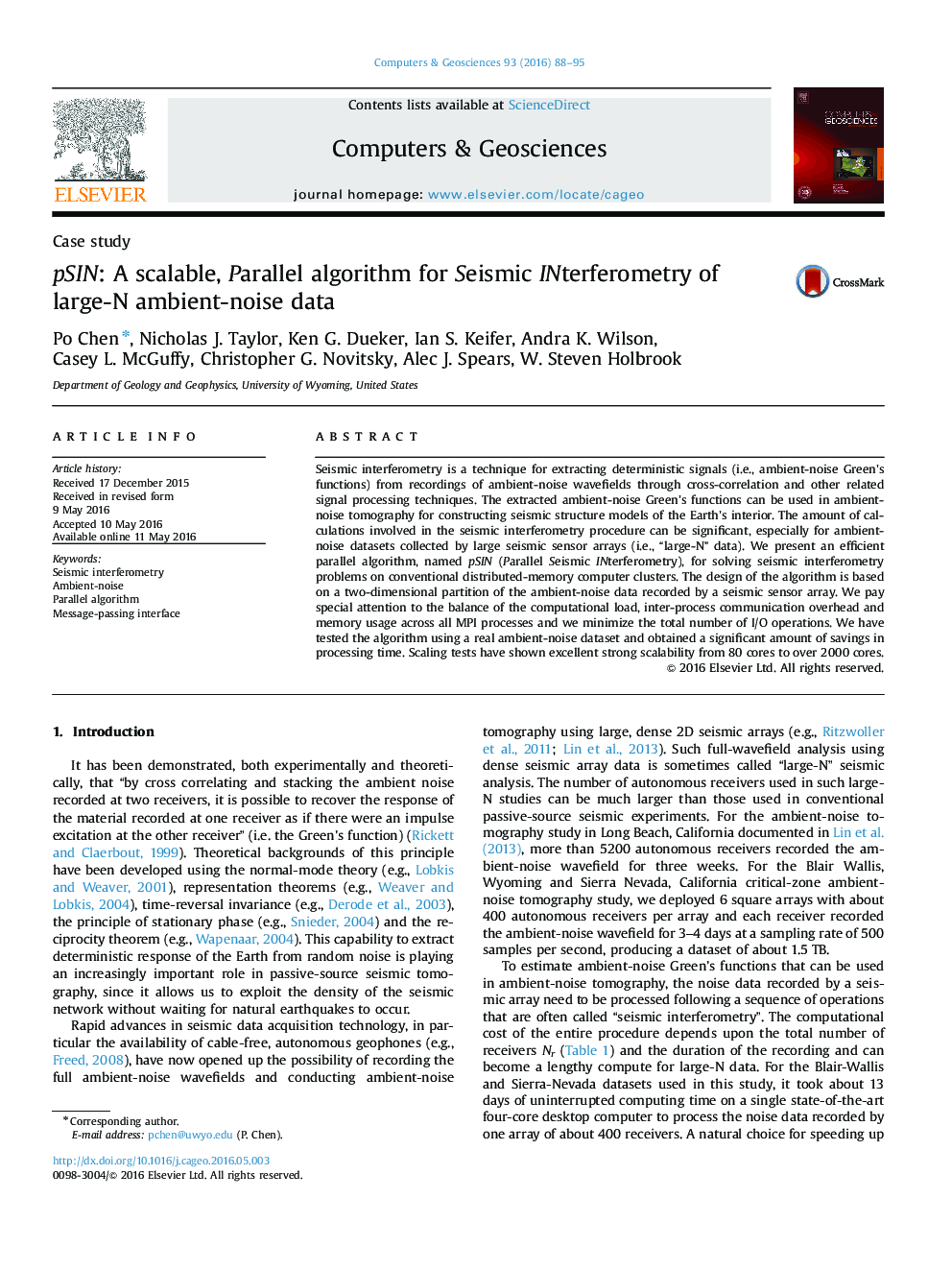| Article ID | Journal | Published Year | Pages | File Type |
|---|---|---|---|---|
| 506896 | Computers & Geosciences | 2016 | 8 Pages |
•A new parallel algorithm for seismic interferometry pSIN is developed.•pSIN requires reading noise data only once and disk I/O overhead is minimized.•Experiments using a real dataset shows close to ideal scalability of pSIN.
Seismic interferometry is a technique for extracting deterministic signals (i.e., ambient-noise Green's functions) from recordings of ambient-noise wavefields through cross-correlation and other related signal processing techniques. The extracted ambient-noise Green's functions can be used in ambient-noise tomography for constructing seismic structure models of the Earth's interior. The amount of calculations involved in the seismic interferometry procedure can be significant, especially for ambient-noise datasets collected by large seismic sensor arrays (i.e., “large-N” data). We present an efficient parallel algorithm, named pSIN (Parallel Seismic INterferometry), for solving seismic interferometry problems on conventional distributed-memory computer clusters. The design of the algorithm is based on a two-dimensional partition of the ambient-noise data recorded by a seismic sensor array. We pay special attention to the balance of the computational load, inter-process communication overhead and memory usage across all MPI processes and we minimize the total number of I/O operations. We have tested the algorithm using a real ambient-noise dataset and obtained a significant amount of savings in processing time. Scaling tests have shown excellent strong scalability from 80 cores to over 2000 cores.
